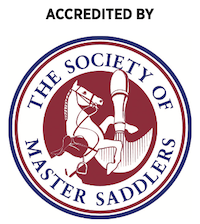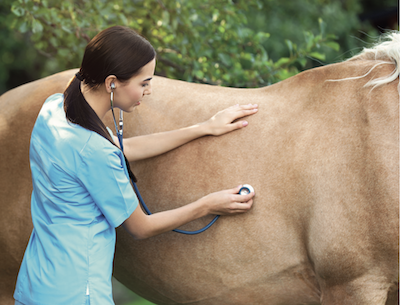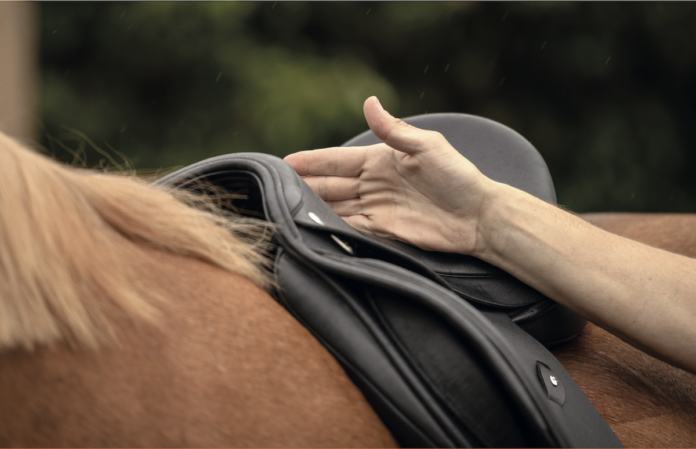FITTING THE SADDLE TO THE RIDER

Saddle fitters who read the feature and complete the task (see ‘How to gain your CPD’) will receive CPD recognition from the Society of Master Saddlers (SMS). SMS Registered Qualified Saddle Fitters are required to maintain CPD fulfilment as part of their registration.
As the various debates about horse and rider weight, plus the delicate topic of accommodating a rider’s long legs and larger body, and the length of saddle on the horse’s back continues, it can leave saddle fitters having difficult conversations with clients. Steph Bradley discusses the challenges saddle fitters face and how they need to be addressed with horse welfare at the forefront.
There is no doubt, humans in the western world are getting heavier and taller (Floud et al., 2011) .
We have increasing knowledge of nutrition both in pregnancy,and for infants through to adulthood; the effect being a greater number of taller and heavier adults and children.
Add to this the larger reliance on cars, and generally less activity in adults in work and leisure and our adult population has startling obesity statistics with >35% adults today considered to be overweight or obese (Mitchell & Shaw, 2015)
This trend is now impacting in the horse world and having a bearing on saddle fit. Over the past 12 years, there has been a growing awareness of the importance of the length of the tree and the most caudal thoracic dorsal process area of the horse’s back.
Saddle manufacturers are designing saddles to suit the many types of back conformation that we now see, including short backs. Thoroughbreds and ‘weight carrying’ cobs are surprisingly very short in the thoracic spine and the latter are also typically croup high, which - combined with us also seeing larger riders - can make saddle fitting more of a challenge.
The SMS is working hard with its FIT 4 WELFARE campaign, and the message is getting through as riders and horse owners are now much more educated about the importance of correct saddle fit and the ridden comfort of their horse.
We must welcome those who want to learn and encourage them to ask questions – education is the key to improving welfare. For example, I’ve had a few clients suggest at their saddle fitting that their horse is ‘short in the back’ but there is sometimes a misunderstanding of what this term actually means.
Often they believe it refers to the length of the whole back and not just the length of the thoracic dorsal area. This is where the templating process is a great way to demonstrate and help them understand more about the thoracic spine length.
“The SMS is working hard with its FIT 4 WELFARE campaign, and the message is getting through”
THE UNDERHORSED CLIENT
There is no doubt that what has been discussed above is creating a growing dilemma for saddle fitters when faced with the underhorsed client.
I’ve noticed younger riders are appearing to be getting ever taller. The Children on Horses classes becoming more popular, and from a social licence perspective it is far more visually acceptable to see a tall rider on a horse able to carry their leg, as opposed to on a pony.
There is also the issue of the price of horses in the post Covid/ post Brexit world which might mean the move from pony to horse is being delayed. In this instance, the pony must cope with a rider who has outgrown their steed, and the greater demands being placed on them.
As a saddle fitter, I have had a client referred to me by a Pony Club tack check steward. The (new) pony was far too small for the young but tall rider, was running in transitions and refusing jumps. This behaviour was believed to be caused by an uncomfortable saddle.
Rather than someone at the Pony Club branch having the conversation, it was left to me as the saddle fitter to gently break it to the parents that the pony was an unsuitable size for the child, and that I couldn’t fit a saddle to the pony. We had a very disappointed child. The Pony Club branch is still to come back to me to discuss what we can do to educate tack check volunteers.
SENSITIVE DIALOGUE
This approach to riders unsuitably mounted and underhorsed isn’t just an issue with younger riders, it’s also echoed with adults.
A 5ft 9in slim built lady who had a four-year-old, 13hh Arab was referred to me because the BHS Stage 5 coach said the saddle didn’t fit - causing the pony to be reluctant to go forwards. The client initially saw an unqualified saddle fitter who didn’t tackle the issue and despite adjusting the huge saddle, the issues continued.
Again, a sensitive dialogue ensued, where I had to gently suggest to the rider that they were not a suitable size to ride this young horse. This conversation resulted in tears - she had suspected this was the case, but everyone had said she was fine riding the pony.
Once again, the saddle fitter was the one to tell the truth. In this instance, the lady was very grateful, and a plan was made to find a smaller jockey for the pony until her children were old enough to ride it.
I didn’t sell them a saddle and I can sleep at night knowing that the pony will now be ridden by someone of suitable size.
ELEPHANT IN THE ROOM
I can sympathise to some degree with the awkwardness of tackling difficult conversations with riders.
As a coach, I was faced with a new client - a heavily overweight lady with her older horse she had owned for 14 years - where the horse was misbehaving as she was mounting. She was spilling out of her saddle, and it was pushing her upper body position forwards and onto the horse’s shoulders.
As a saddle fitter, my protocol would mean I have to raise ‘the elephant in the room’, but as a coach I danced around, making gentle hints. In the end, I asked when her saddle was last checked and to my horror she replied: “Two days ago.”
On speaking to her (male) saddle fitter, he told me that he didn’t see her ride in the saddle because she had been a client for 14 years. Yes, he confirmed, she had become too big for the horse - but he really couldn’t have that conversation with her because he was a male.
WHO SHOULD HAVE THE DIFFICULT CONVERSATION?
My question to everyone is, who should have these conversations?

Yes, it is sensitive and it can be upsetting. But as a saddle fitter and a coach, I feel more upset for the horse - and it is this that must give us the strength to speak out.
Most of the time, I’ve found that most riders are already aware of their issues.
I met a lovely 19-year-old lady who had just purchased a dressage pony. I already knew the pony as I had previously fitted and checked the saddle for many years prior to her purchase.
The pony was used to being in a 15-inch saddle with his previous jockey. This new rider needed a larger seated saddle and we had to compromise on a 16.5-inch.
I highlighted the research suggesting horses were affected in hind limb gait when subjected to heavier riders, and the message seemed to hit home. By the time the saddle arrived ten weeks later, the rider had lost two stone by careful eating, and a strong desire to help her pony.
Her story went viral and she was incredibly brave to share it. She became an inspiration to many in the same boat, and the taboo topic became something spoken of. She will never fit in a 15-inch saddle – however she is aware and has the horse’s back and saddle checked routinely, and she has kept the weight off.
REFUSING TO SELL A SADDLE
Equally, I have had the experience of refusing to sell a dressage saddle when I felt the rider was over the weight limits, and the pony to be quite overweight too.
The existing saddle was fitting well and I would struggle to find her a dressage saddle that would fit them both as well. I advised the rider to weigh her horse and themselves with tack. The rider had a tendency to tip forwards and put weight onto the pony’s shoulder – this caused the pony to become unbalanced. Had she been more balanced it wouldn’t have been such an issue.
She left the appointment quite happy, saying she understood, and that she would be back with her bigger horse. Overnight, her opinion changed and she became offended by my advice and comments. She took to Facebook and I became the target of trolls - an upsetting and unpleasant experience.
I refunded her appointment fee and asked her to take her post down. Ironically, she kept in touch and sent me the results of the weighbridge - the horse/rider plus tack ratio was 19% - but that was with the horse being very overweight and with her riding being unbalanced.
Is it any wonder no one wants to stand up for the horse, and raise concerns when, despite being diplomatic and not selling a saddle that would have been unsuitable, you still face the wrath of trolls?
It seems saddle fitters are damned if they do and damned if they don’t. It is not an easy path to tread.
WHAT’S THE ANSWER?
As an industry, more published research on rider weight will help, and Hartpury University is making headway with this.
Also, we can collectively increase rider awareness of these issues. Perhaps ask riders to weigh themselves wearing their riding hat, boots and holding their saddle as pre-appointment information?
I have found that 100% of rider clients were happy to be weighed with their saddle while dressed to ride at the saddle consultation when given the option. There were indeed some ‘over the limits’ riders for whom it galvanised them to act. This was fantastic - of course, all were over the age of 18.
All equine paraprofessionals need to be brave, show a duty of care to the horse, and be willing to sensitively raise concerns as to underhorsed riders.
The back professional who sees the horse constantly yet hasn’t verbalised the correlation between the routinely sore back and the weight and imbalance of the rider the horse is carrying.
The vet at the pre-purchase vetting not asking about rider size for suitability, and the coach faced with riders that are too large for their horse or pony.
Everyone has a responsibility; it shouldn’t be off loaded to the saddle fitter to have the conversation. The job really is hard enough already.
As previously mentioned, education is still needed. We can do talks at pony clubs, riding clubs, webinars, vet groups – anywhere where the message can be spread.
The less taboo the subject, the better for horse welfare. Good luck out there!
SMS CPD TASK
HOW TO GAIN YOUR CPD. Instead of the usual quiz, the CPD for this article is to create a think tank.

CPD points will be given to those who come up with one idea or one action that they will commit to completing, resulting in raising more awareness about this ongoing issue.
By doing this, each of us will be contributing to improving the welfare of the ridden horse. The more saddle fitters and paraprofessionals stick together on this topic, the stronger the message will be.
SUBMIT YOUR RESPONSE ON THE RIGHT OF THIS PAGE IN THE CPD Q&A SECTION
SADDLE FITTERS: Don’t forget to log your achievement on your own CPD file as supplied by the SMS. Successful completion is worth 30 minutes’ training time. Please direct any queries to enquiries@mastersaddlers.co.uk












